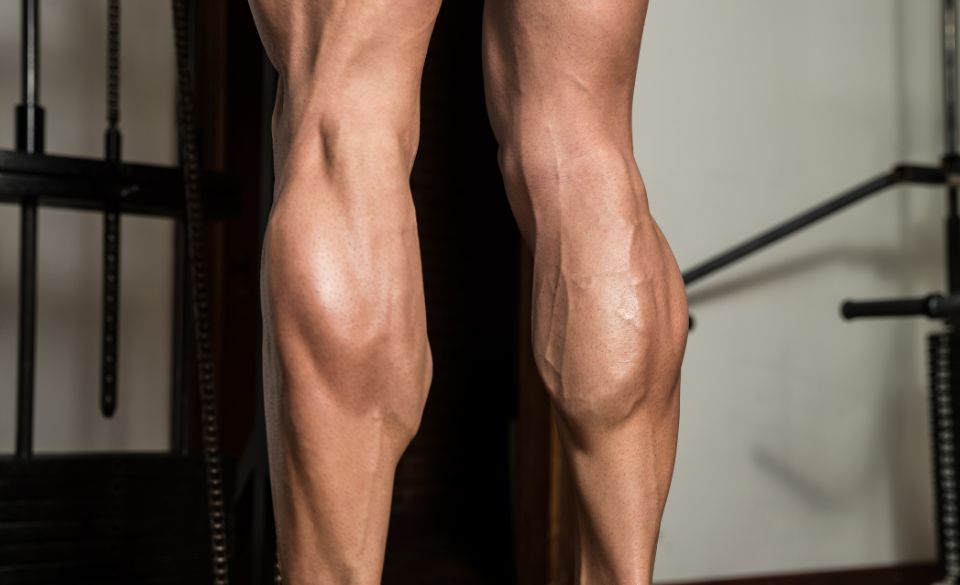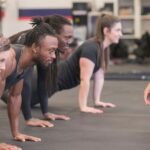
10 Best Calf Exercises: How to Increase Calf Mass and Definition
Page Contents
If you’re looking to increase calf mass and definition, there are a few things you can do to achieve your goals. Whether you’re an athlete looking to improve your performance or just someone who wants to build stronger, more defined calves, the following tips and exercises can help.
Train your calves with resistance exercises
Calf muscles respond well to resistance training, so it’s important to incorporate exercises like calf raises, jump squats, and box jumps into your workout routine. These exercises work your calf muscles through a full range of motion and help to build strength and size.
To perform a calf raise, stand on the edge of a step or platform with your heels hanging off the edge. Slowly raise up onto your toes, then lower back down. To make the exercise more challenging, hold a weight or use a resistance band.
Jump squats and box jumps are also effective exercises for building calf muscle. These exercises combine resistance training with plyometrics to build explosive power in your calf muscles.
Vary your calf training
To maximize calf growth, it’s important to vary your calf exercises and training methods. Try different types of calf raises, such as standing or seated, and vary the number of sets and reps you do. This helps to challenge your muscles in new ways and prevent plateauing.
Increase the weight and intensity
Gradually increasing the weight and intensity of your calf exercises over time can help stimulate muscle growth. Start with a weight that feels challenging but manageable, and gradually increase the weight or resistance as you get stronger.
Incorporate plyometrics
Plyometric exercises, such as jump training, can help increase explosive power in your calf muscles and lead to greater muscle growth and definition. Incorporate exercises like box jumps, jump squats, and single-leg hops into your workout routine to build power and strength in your calves.
Pay attention to your diet
To build muscle mass, you need to fuel your body with the right nutrients. Make sure you’re consuming enough protein and carbohydrates to support muscle growth and repair. Good sources of protein include lean meats, eggs, and dairy products, while carbohydrates can be found in fruits, vegetables, and whole grains.
Be consistent
Consistency is key when it comes to building muscle. Make sure you’re training your calves regularly and pushing yourself to work harder each time. Aim to train your calves at least twice a week, and gradually increase the intensity and volume of your workouts over time.
Allow for adequate recovery time
Your calf muscles need time to recover and repair after a workout, so make sure you’re giving them adequate rest between training sessions. This means taking at least one day off between calf workouts, and focusing on other muscle groups during your off days.
In conclusion, building strong, defined calves takes time and effort, but by incorporating these tips and exercises into your workout routine, you can achieve your goals. Remember to be consistent, vary your training, and pay attention to your diet and recovery, and you’ll be on your way to stronger, more defined calves in no time.
10 Best Calf Exercises
1. Standing Calf Raises – This classic exercise targets the gastrocnemius muscle, the larger of the two calf muscles. Stand on a raised surface with your heels hanging off the edge, and lift yourself up onto your toes, then lower back down. You can add weight by holding dumbbells or using a calf raise machine.
2. Seated Calf Raises – This exercise targets the soleus muscle, which lies beneath the gastrocnemius. Sit on a bench or chair with your knees bent and your feet flat on the ground. Place a weight across your thighs and lift your heels, then lower back down.
3. Donkey Calf Raises – This exercise targets both the gastrocnemius and soleus muscles. Position yourself with your hands and feet on the ground and your hips raised, like a donkey kicking up. Lift your heels up as high as you can, then lower back down.
4. Box Jumps – This plyometric exercise can help build explosive power in your calf muscles. Start in a squat position in front of a box or bench, then jump up onto the box, landing with both feet. Jump back down and repeat.
5. Jump Rope – This cardio exercise also helps strengthen your calf muscles. Jump rope for a set amount of time, focusing on staying light on your feet and pushing off with your calves.
6. Farmer’s Walk – This full-body exercise also targets your calves. Hold heavy weights in each hand and walk forward, focusing on keeping your core tight and your heels pushing off the ground with each step.
7. Reverse Lunges – This exercise targets your calves while also working your glutes and hamstrings. Step back with one foot and lower down into a lunge, then push back up to standing.
8. Box Squats – This variation of the squat exercise can help activate your calf muscles more than a traditional squat. Squat down onto a box or bench, then push back up to standing.
9. Leg Press Calf Raises – This exercise targets your calf muscles using a leg press machine. Place the balls of your feet on the edge of the platform and push through your heels to raise the weight, then lower back down.
10. Single-Leg Calf Raises – This exercise targets each calf individually, helping to correct any imbalances. Stand on one leg and raise up onto your toes, then lower back down. Repeat on the other leg.
Several studies have shown the effectiveness of calf exercises for increasing calf mass and definition. One study published in the Journal of Strength and Conditioning Research found that standing calf raises were the most effective exercise for increasing calf muscle size. Another study published in the Journal of Sports Science and Medicine found that calf raises using a leg press machine were effective for increasing calf muscle thickness.
Incorporating these 10 calf exercises into your workout routine can help you achieve stronger and more defined calf muscles. However, it’s important to vary your exercises and gradually increase the weight and intensity to continue seeing progress over time. With dedication and consistency, you can achieve the strong, sculpted calves you’ve been working towards.
Why Are Strong Calf muscles Important
Strong calf muscles are important for a number of reasons. Firstly, they play a crucial role in everyday movements such as walking, running, and jumping. Calf muscles help to push your body forward and upward, making these movements possible.
In addition, strong calf muscles can help improve your athletic performance in sports such as basketball, volleyball, and track and field. The explosive power and speed required for these sports rely heavily on strong calf muscles.
Strong calf muscles can also help prevent injuries. Weak calf muscles can lead to issues such as shin splints, plantar fasciitis, and Achilles tendonitis. By strengthening your calf muscles, you can help reduce the risk of these types of injuries.
Finally, strong calf muscles can improve the overall aesthetic appearance of your legs. Defined and toned calf muscles can give your legs a more sculpted look and improve your confidence.
Benefits of Strong Calf Muscles
There are numerous benefits to having strong calf muscles. Here are some of the most significant:
Improved Athletic Performance: Strong calf muscles are essential for many athletic activities, such as jumping, running, and sprinting. Athletes with strong calf muscles have the power and explosive strength needed for activities such as basketball, volleyball, and track and field.
Enhanced Balance and Stability: Strong calf muscles help improve your balance and stability, which is essential for daily activities such as walking, running, and even standing. Strong calf muscles help maintain proper alignment and prevent instability or wobbling.
Injury Prevention: Weak calf muscles can lead to a variety of injuries such as Achilles tendonitis, plantar fasciitis, and shin splints. By strengthening your calf muscles, you can help prevent these types of injuries.
Improved Posture: Strong calf muscles can help improve your overall posture. By supporting your body weight and helping to maintain proper alignment, strong calf muscles can reduce stress on your lower back and improve your posture.
Better Aesthetics: Strong calf muscles give your legs a toned and defined look. Aesthetically pleasing calf muscles can help boost your confidence and self-esteem.
Reduced Risk of Varicose Veins: Strong calf muscles help pump blood back up to the heart and prevent blood from pooling in the lower legs. This reduces the risk of varicose veins, which can be unsightly and painful.
Overall, strong calf muscles are important for both functional movement and athletic performance, as well as injury prevention and aesthetic appearance. Incorporating calf exercises into your workout routine can help you achieve stronger and more defined calf muscles, leading to improved overall health and fitness.


